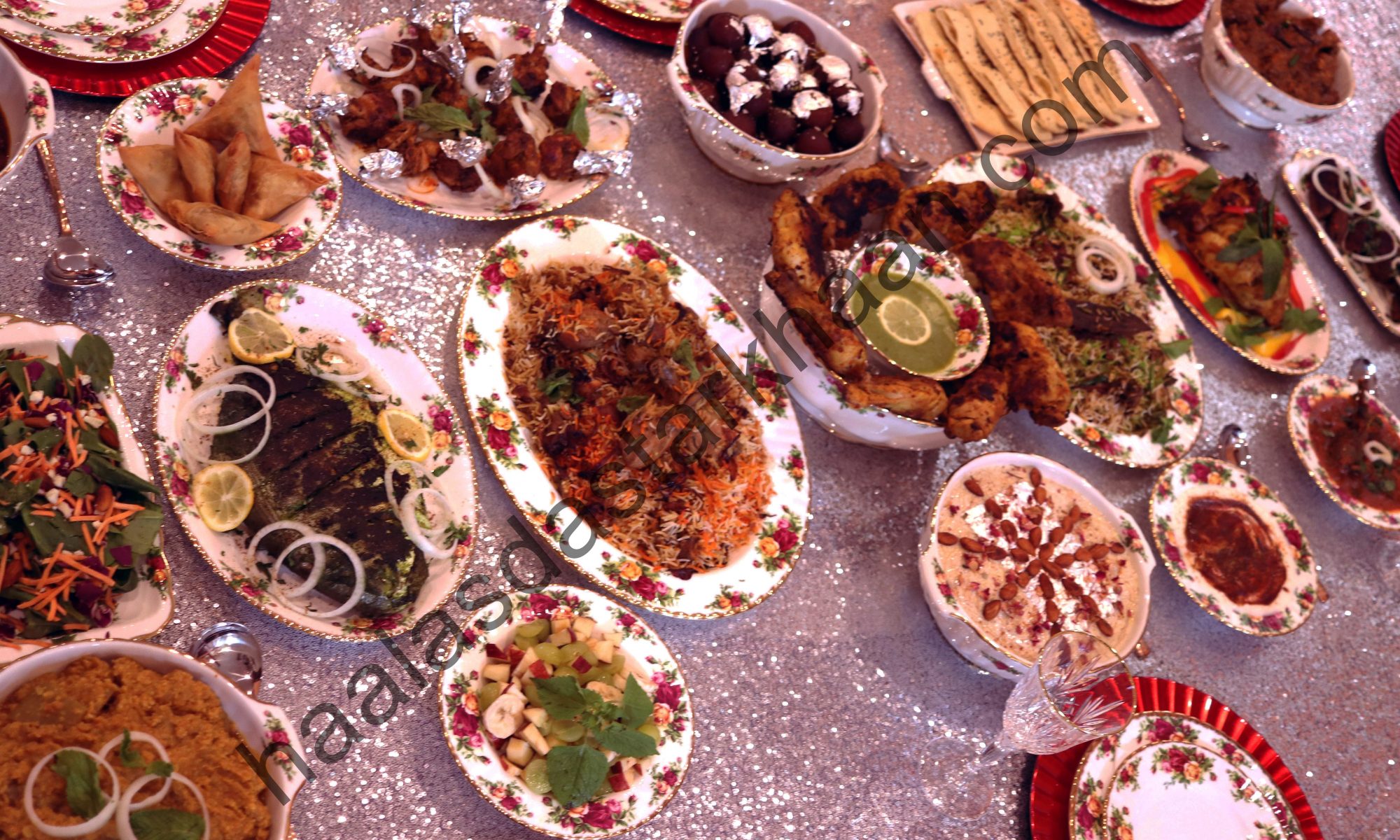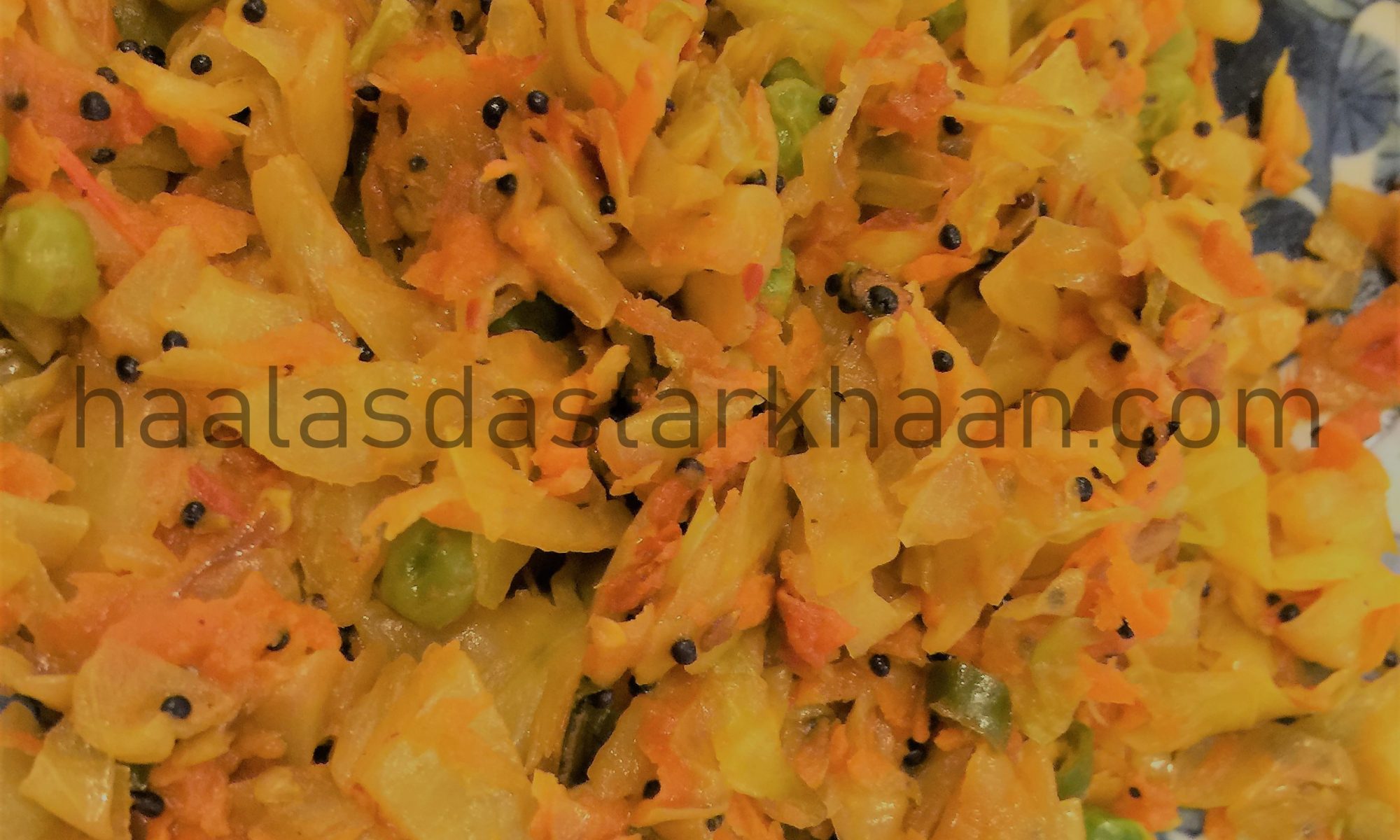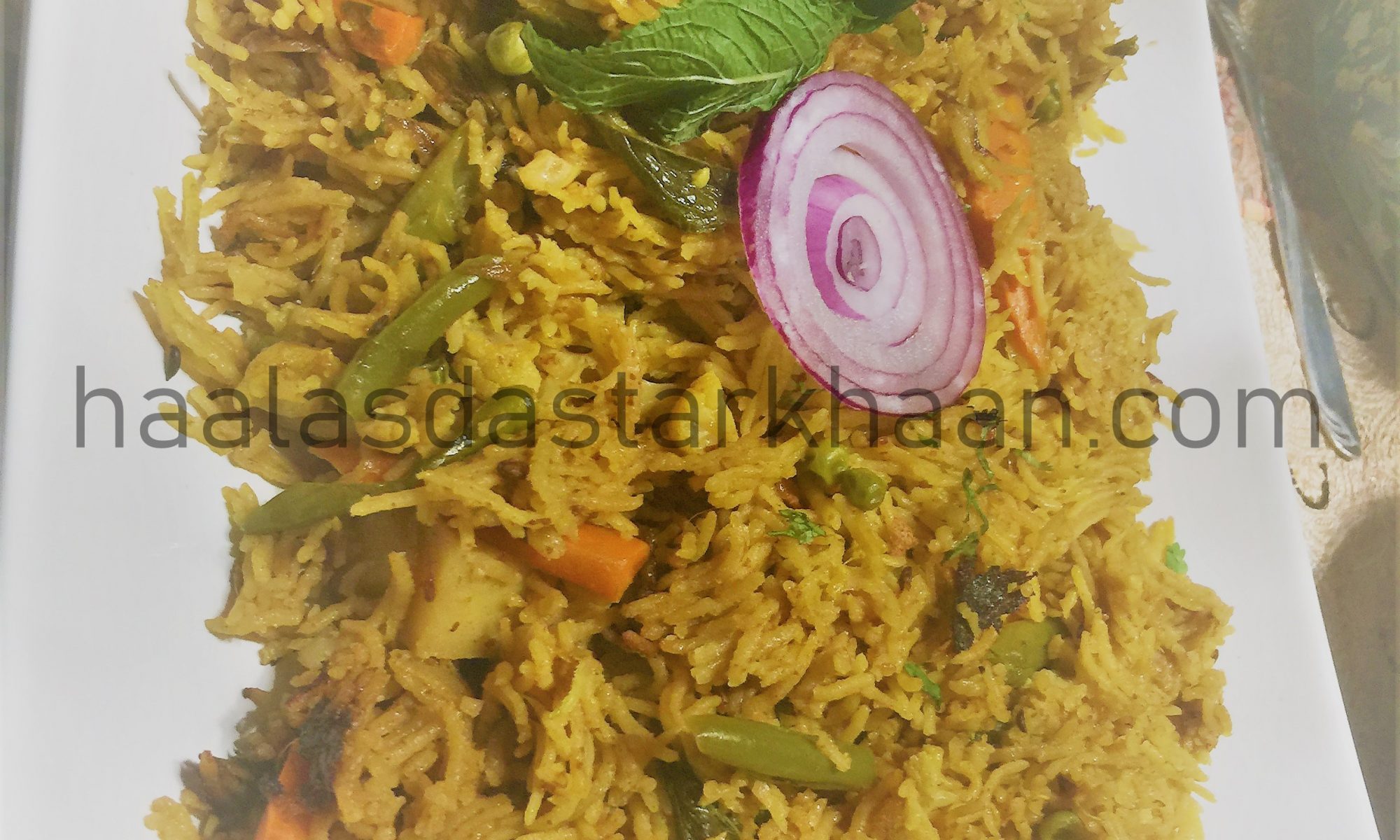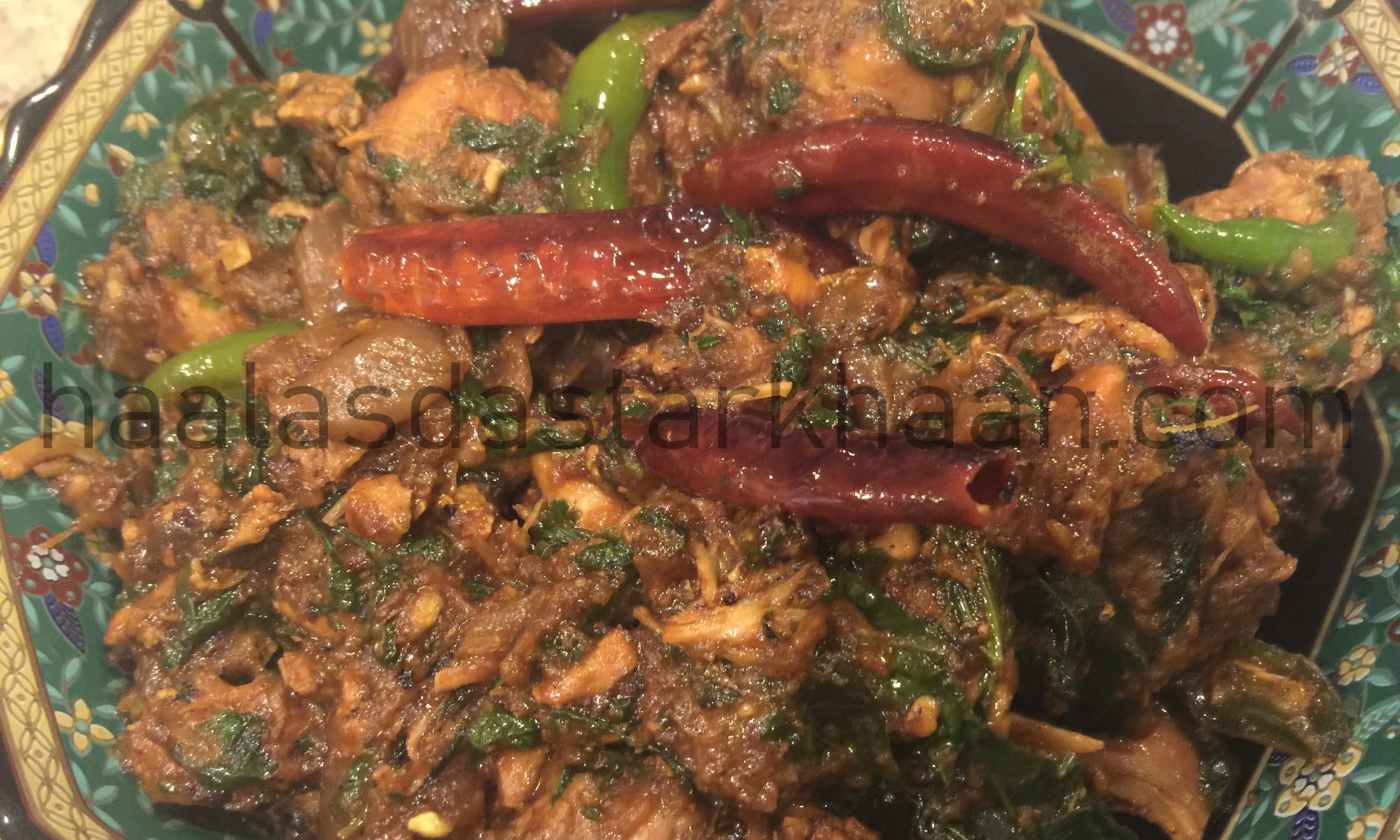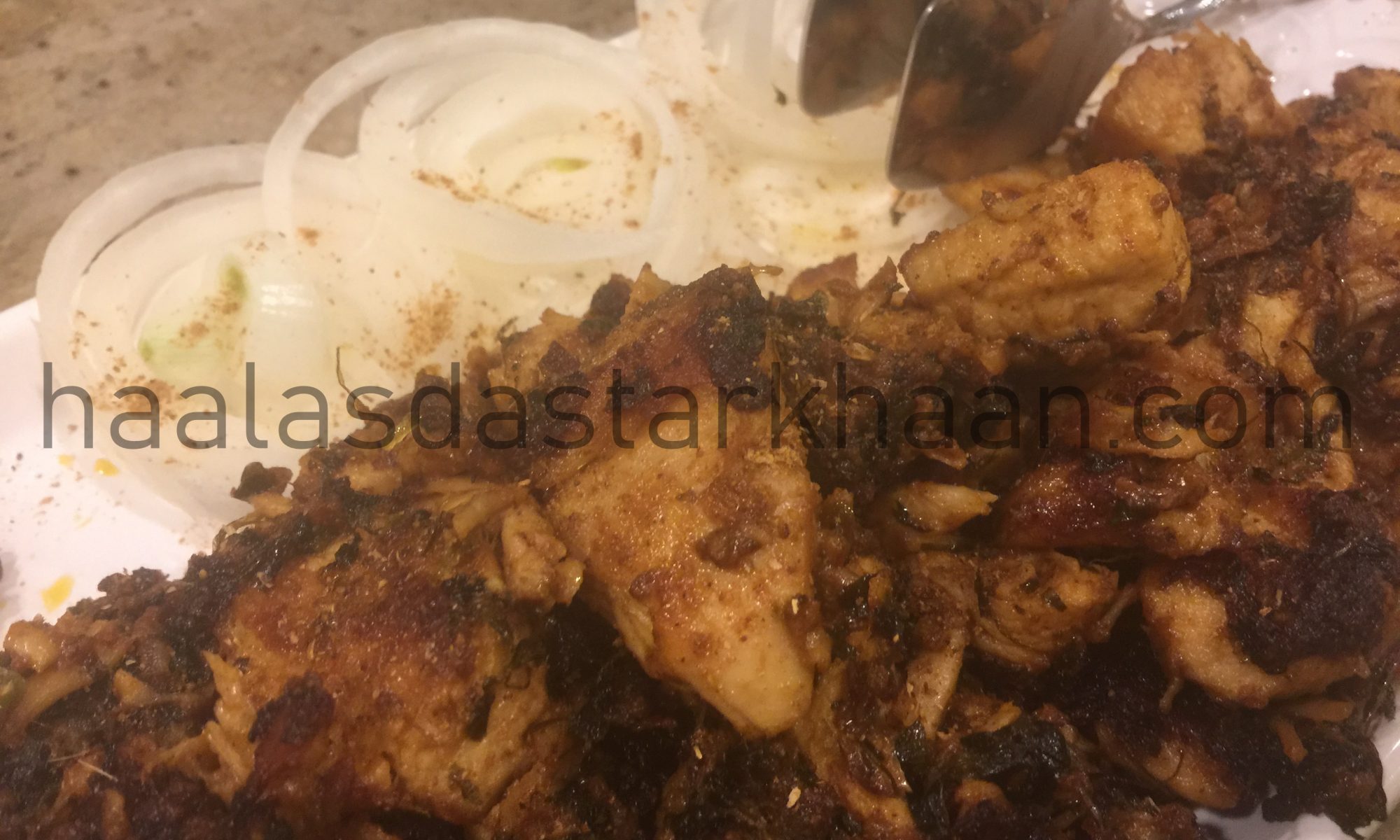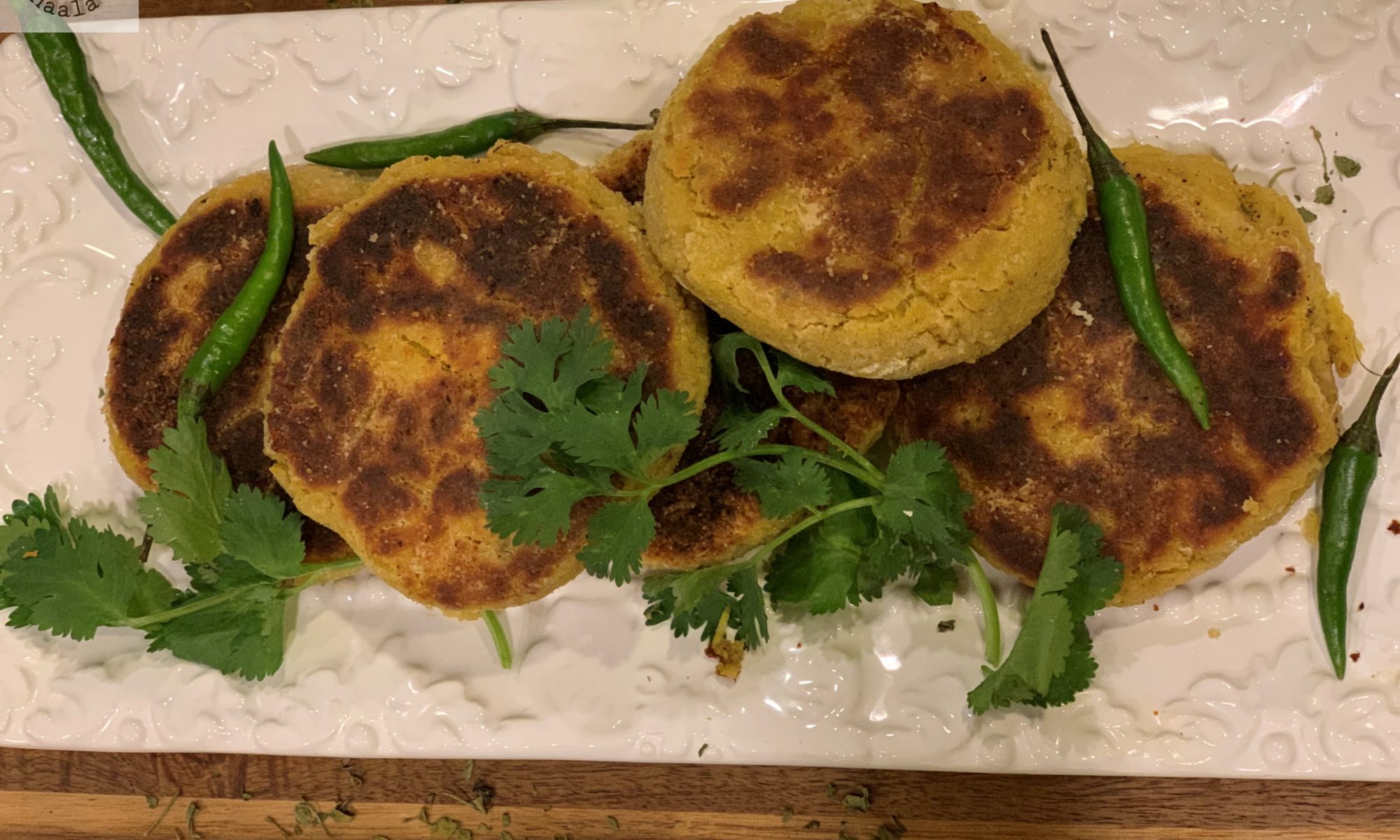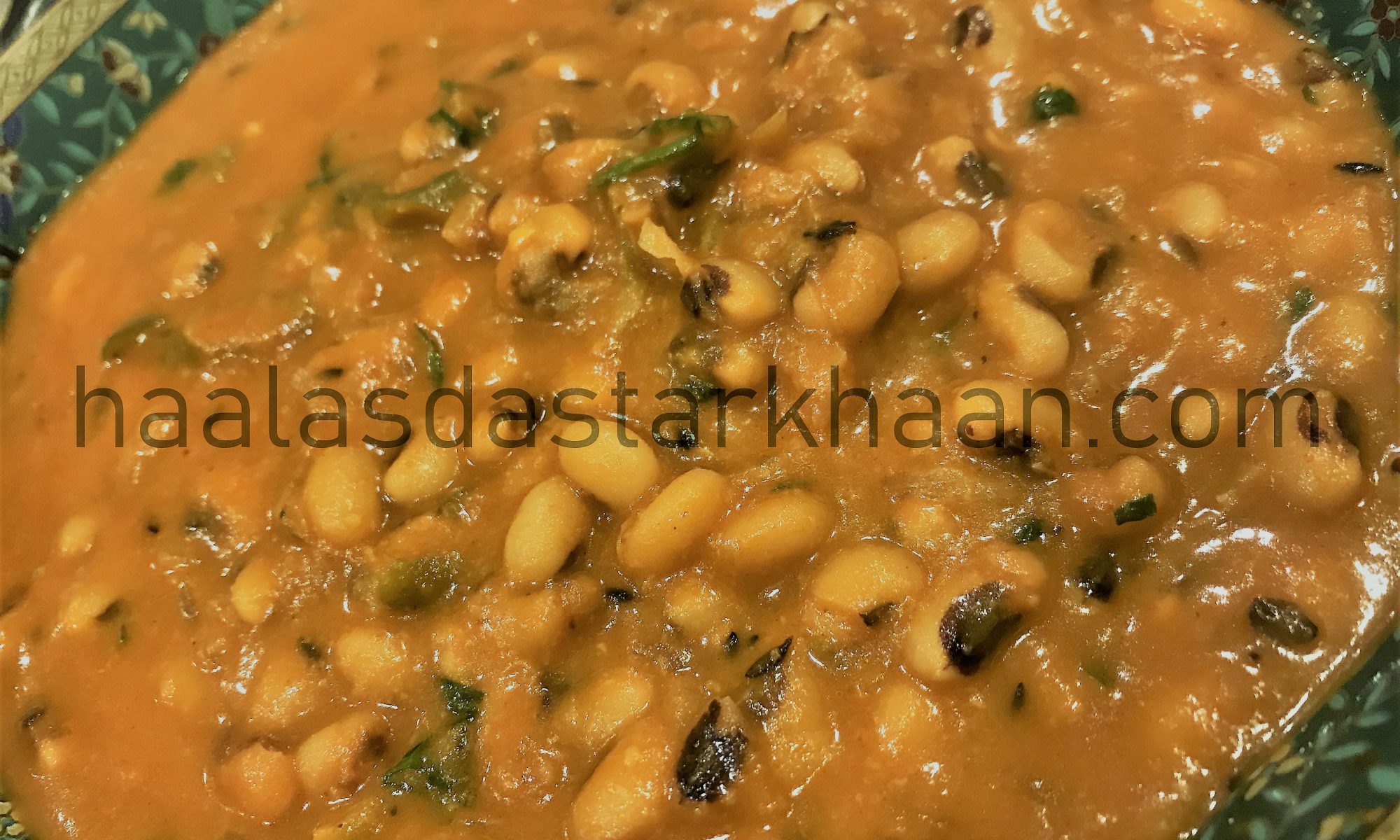
Indians and their love for lentils and beans is known worldwide. Most homes in India cook some kind of lentil or beans everyday. The dishes in North India and South India, basically my in laws and my mom’s family cook are very similar, except for the modes of cooking.
Being from Rajasthan, we cook more of mung, chana, chanwle, chhole where as, my in laws cooked more of whole mung, toovar and horse gram. Now don’t get me wrong, its not that my mother in law never cooked yellow mung, but it wasn’t cooked like Toovar, which is cooked in 4 different varieties in the house. Where as, my mom only used Toovar daal for khichdi or for making sambhar. All great beans and lentils and so many varieties and I consider myself really fortunate that I have the honor to learn all these great dishes. Its not just a delight to cook them all and enjoy a huge variety, but its a great pleasure to be able to share them all with the world.
Getting back to Chanwle or Black eyed beans. This dish is my own creation and I have a beautiful story attached to it. Mr. Parveez had not tried Chanwle, except at restaurants. So, once we happened to be eating some north Indian thaali and chanwle made their way to one of the foods served. They were cooked lightly in mild spice and had an amazing taste. I, then mentioned to my better half that I have grown eating these beans and since he likes I would love to cook them at home. My next trip to the grocery store had chanwle in the list. I knew I had to soak and boil them, and I thought I would ask my mom for the recipe, not realizing that the time I started cooking dinner in USA, my mom was sleeping in India. The soaked and boiled chanwle looked at me with high hopes of being cooked for dinner and that’s when I made up my own recipe, which was loved by my husband and kids.
I will share my mom’s recipe too on this site. Meanwhile, this recipe is simple, amazing and super delicious and healthy.
The value of eating vegetables is something most of us realize after getting older, specially after having kids. This is the time you understand why your mom took all those strict routes of making you eat Bhindi, turai and patta gobhi. In my case, I always threw a fit when my mom made cabbage or patta gobhi but, since I wasn’t a big fan of Okra/ lady finger/Bhindi either, I had to pick my battle and would normally give in with cabbage.
It was my teen age when I actually started enjoying cabbage and I remember that my mom started adding grated carrot and peas to the cabbage which changed the taste from the tradtional cabbage curry and added a lot more flavor to the dish.
This cabbage curry is my mom’s recipe. There is no onion or garlic added to it. My boys love it and its one of the few ways to serve the greens in a delicious way.
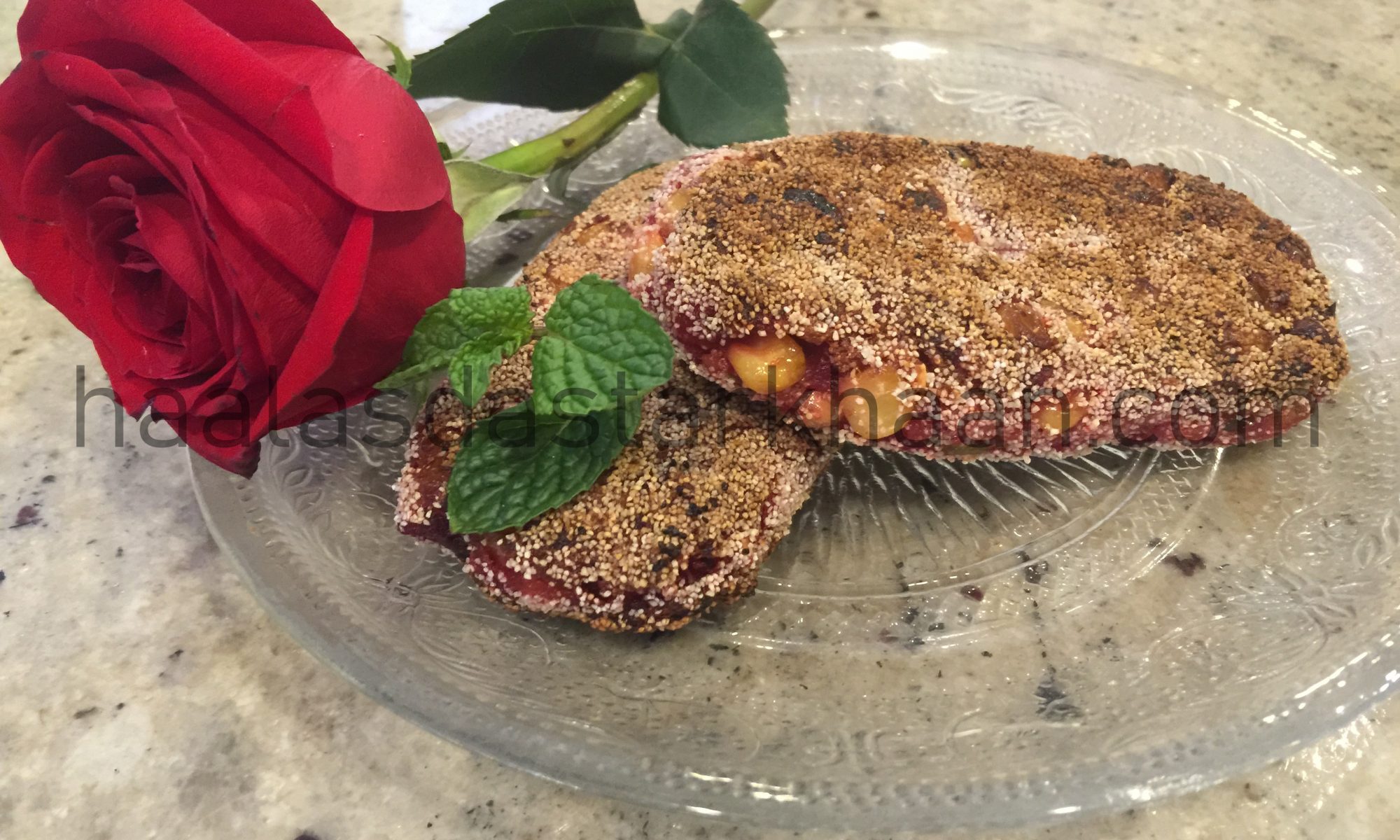
As Indians, we love snacks and our snacking has no time. India has shops where you can find food, cooked fresh that comes under the category of snack, even though the one time calorie can exceed your breakfast, lunch and dinner combined, but, its still a snack.
Every tea time/ coffee time needs to have a snack at the side. Every time we have guests, making a fresh snack is considered honoring the guests. Though times have changed and most people serve store bought snacks, some people in India still prefer ordering fresh made snacks from the local stores when they expect guests, if they aren’t able to prepare them at home.
And, then still existing are people like me who prefer making their snacks at home, as much as possible and serving their guests and family with fresh made stuff. I am not bragging, honestly, I enjoy doing it and also have the time. There is nothing more amazing to flavors that are freshly cooked.
Our life these days, is so fast paced that its tough for us to take care of our health and we all know the culprit is lack of exercise and intake of processed food. In spite of all, we find it better to rely on medicines and cut down on all flavors of life, than changing our lifestyle. Its healthier if you find a little time in your busy schedule and follow the simple recipes I share.
The recipes are not just super delicious but also simple to follow and very clean to eat.
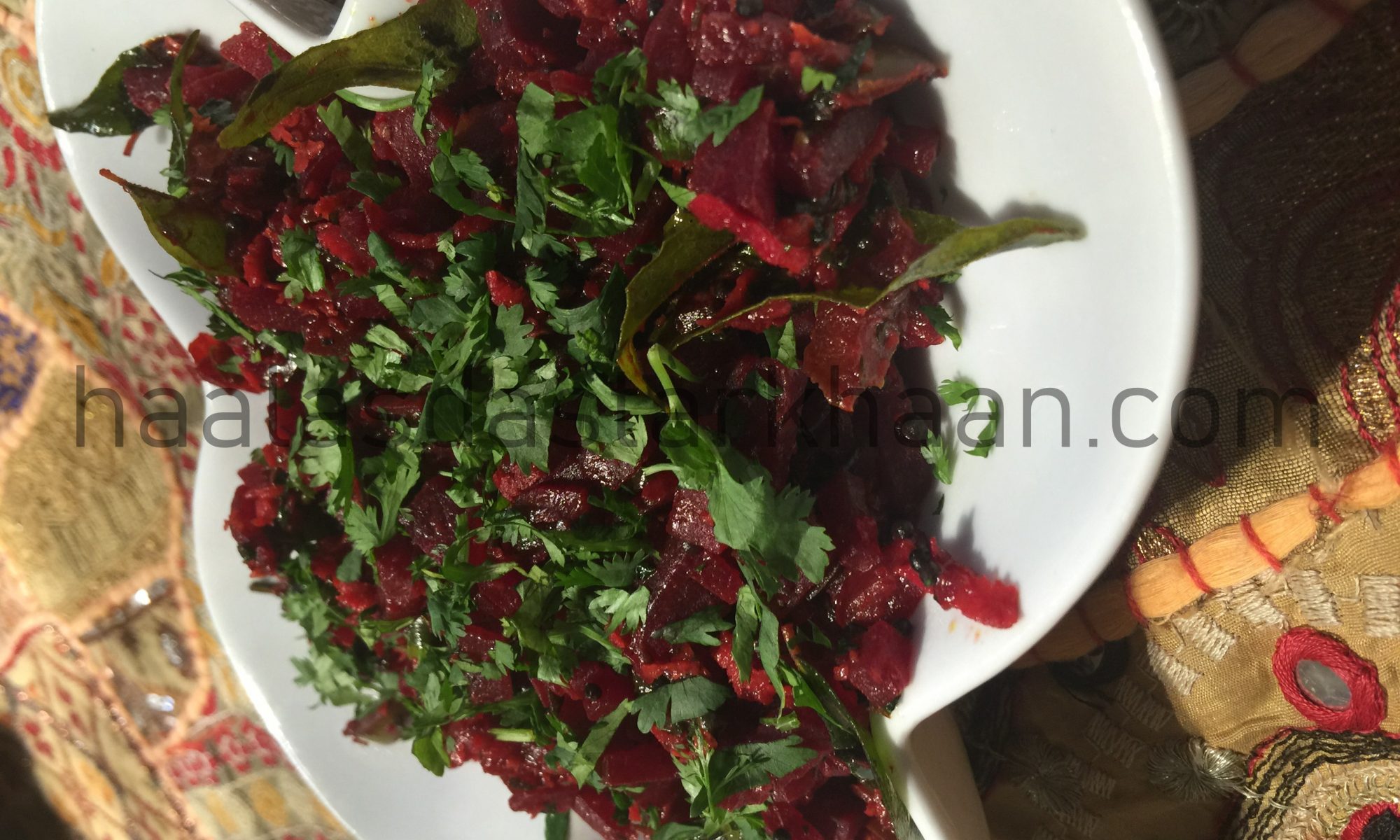
We love curries and specially curries that aren’t made commonly. One such curry is Beetroot. While growing up, Beetroot only made it to our salads, with time I found that people even make pickles out of Beetroot. And, then after I got married, I found that its a pretty popular curry in my new home.
Like all vegetable curries, Beetroot also has loads of unique ways of being cooked. My MIL makes her Beetroot by cooking it with spices and coconut puree, which is amazingly delicious as well. I still remember when Mr. Parveez told me one of his childhood stories about Beetroot. As a kid, he would sometimes take this curry to school and since Beetroot left a little red color on his tongue and he would run around telling his school mates that he had blood for lunch…LOLzzz. Childhood is the best life we live and the memories are so fond and extremely special. The most fascinating part is us remembering everything by looking at things around us….I always love sharing these little stories, after all, every food has a story.
This recipe is one of my experiments with both my favorite veggies, Beetroot and Bell pepper.
We love Biryani. Till date, I have cooked over 45 varieties of Biryani, with different flavors and different styles of cooking. Its amazing how beautifully the flavors blend in together and give out fabulous taste.
Biryani was introduced by Mughals in India. But with time, the addition of spices, chilies, local produce were added to enhance and make numerous varieties of Biryanis. And, I believe that with time, the vegetarians in India adapted the dish and decided to make the vegetarian option. Nevertheless, meat/ chicken/ vegetables, Biryani is always delicious.
Usually, Biryanis always goes hand in hand with chicken/ meat and is a non vegetarians delight. But, little do we realize that vegetarian Biryani would be equally delicious. While making vegetable Biryani, its always advised to use a variety of vegetables, of your choice. The good thing is that veggies are incorporated so easily that even with people who dislike them, enjoy it in this form.
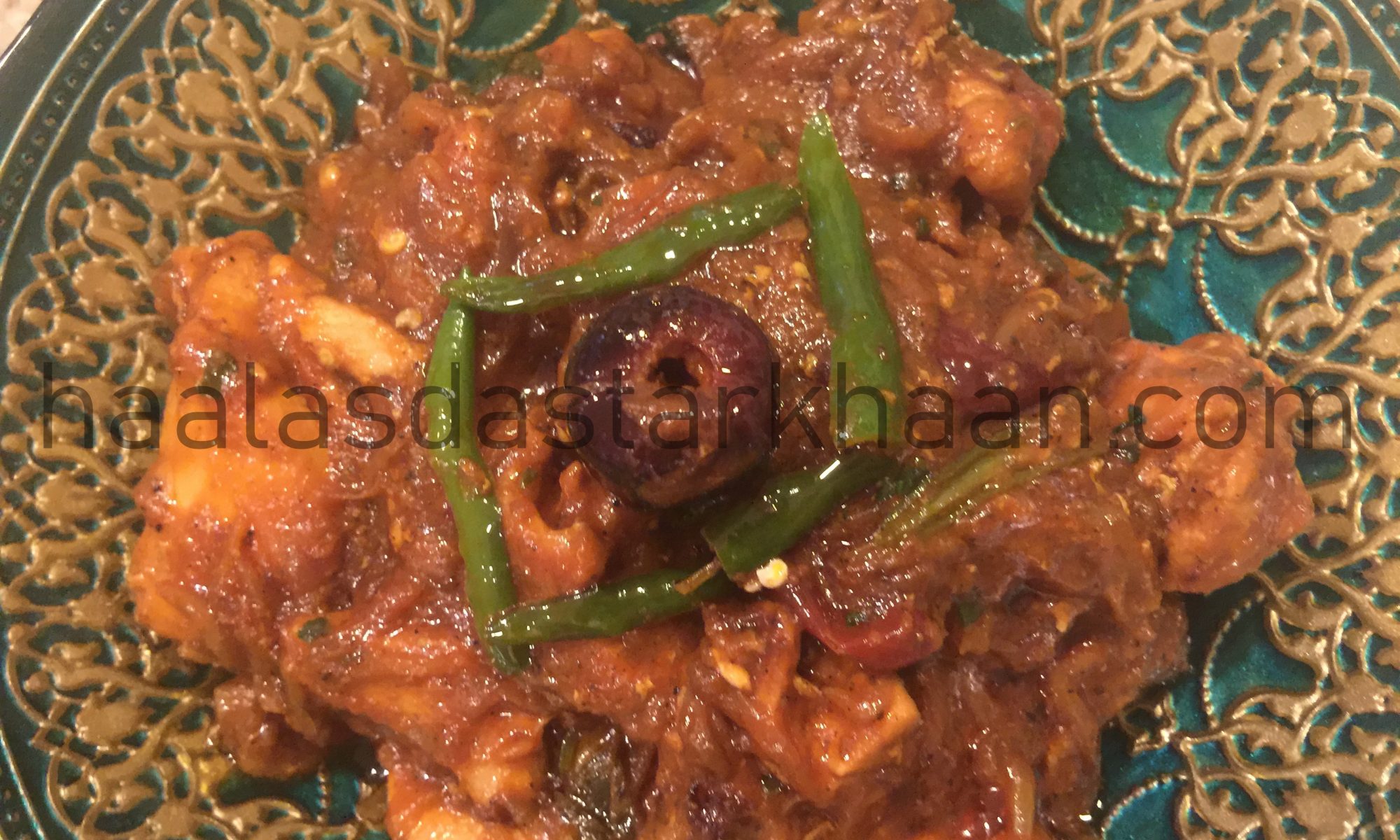
Every Indian who loves non vegetarian food and don’t like Pepper Chicken. Pepper Chicken is made in dry style and curry, both. This recipe I tried is on the drier side and serves as a great side dish. The taste or flavor is very close to Chettinad style of chicken. The pepper rules the dish with other chilies, making it spicy and the spices leave that flavor on your taste buds that lingers on for long and makes you crave to eat one more bite even though your tummy is full. Yupp!! this is that kind of dish.
I come across a lot of people who take certain flavors and spices lightly and do not realize how a perfect dish is ruined if the measurement of a certain spice isn’t accurate. Pepper Chicken has black pepper as the main spice and we need to make sure that Black pepper powder is put in the correct measurement. Less would not give a perfect flavor and more would make the dish bitter.
This recipe is fool proof and I have paid attention to the exact ingredients to make a pepper Chicken. Hope you enjoy as much as we do.
This dish is a gift of my husband, Mr. Parveez. On days when I am confused and find it hard to decide on what should be cooked, he would come up with his innovative ideas and suggest on something new he would like me to try, unless he makes his way to the kitchen and treat me something super fatabulous.
Anyways, one day I was all confused and he suggested making this chicken dish. The dish uses 4 kinds of chilies so spice factor is a little high and if you aren’t daring enough, I would ask you to cut down on the spice level. This dish makes a great side dish with dal chawal.
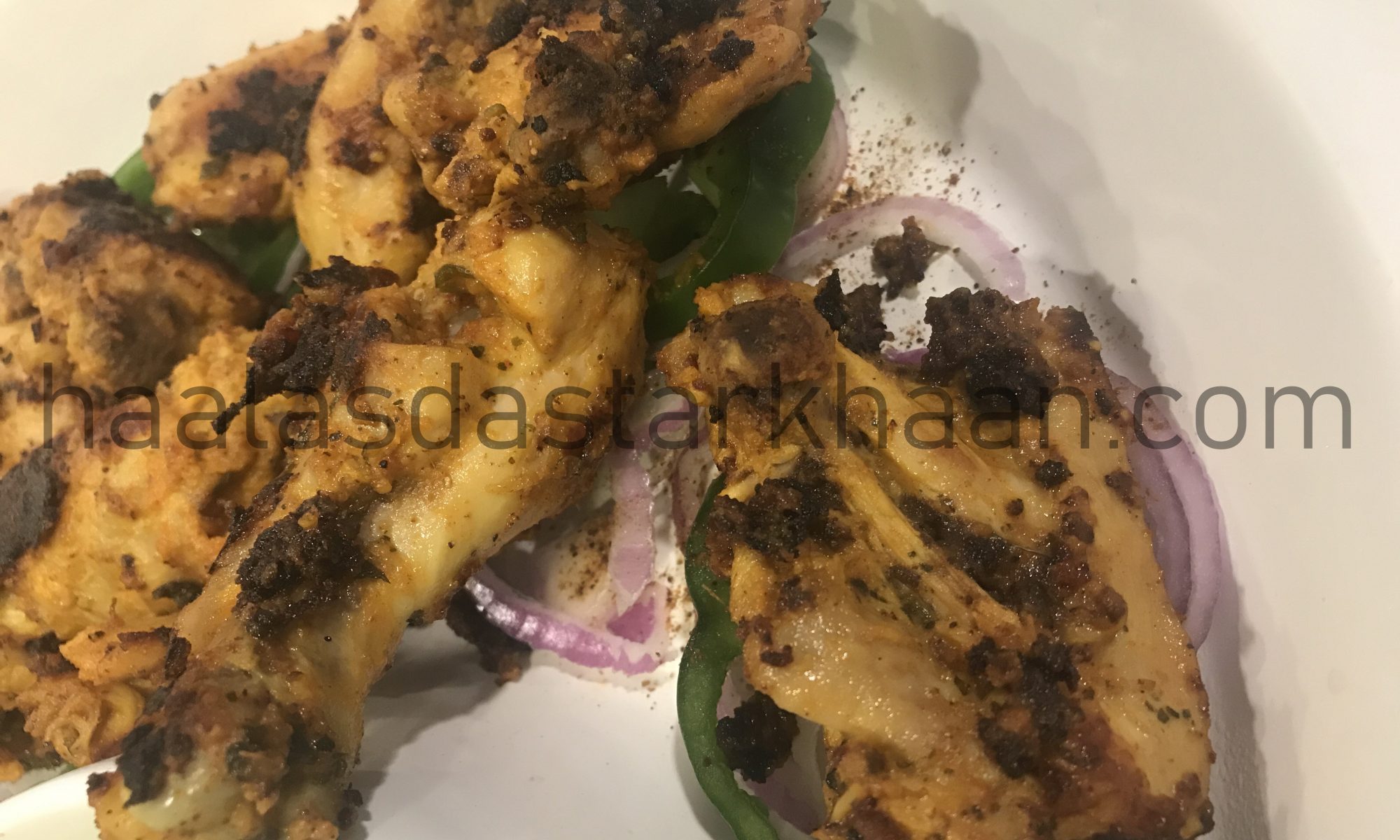
This recipe of chicken kebabs comes from the era of Mughals. I know, most all kebabs do. Kebabs are a gift to the food world by the Middle East. The variety, the flavors and the fact that they are grilled in different ways can leave your taste buds joyful and crave for more.
I believe for a fact that when the Mongolians and the Persians rulers came to India, it wasn’t an invasion. I know during that era it does look like an invasion because all the wars were for power and land and the greed to appear mightier and stronger than other rulers always seemed to drive warriors crazy where they seemed to be baffled by the prosperity of the neighboring kingdoms and invasion seemed to be the only way to satisfy your hunger for more. But, leaving all that aside, the Mughals brought in a lot of architectural science, spices and methods of cooking. They came to settle and make India more diverse and that’s what I fail to see in Indian news today.
I am proud to be an Indian, a country where friendship and mutual respect comes much before religion. Where Eid is celebrated with as much love as Diwali. Where Hindus are always at your house on Eid to taste awesome Biryani and your mom makes sure she cooks vegetarian food separately for your 2 vegetarian friends. Where stories of Jodha Akbar is less of Akbar, the Emperor who invaded India and more of the love between a Mughal Emperor and a Rajput Queen. India a country, that proves its a place accepting all religions and stands tall with its cultural heritage.
With all that, food plays a very important role. The spices like cinnamom, cloves, cardamom and saffron changed the complete look of flavors and when mixed with Indian chilies, the result was food from Paradise.
This recipe goes back to the era of Jahangir / Saleem and the story that I read said that he had a great knowledge of spices and had the chefs prepare dishes according to his taste. This recipe comes in as one of his favorites.
Now, with the history books I read, I do get an idea of the ingredients but they aren’t a 100% of what were used in the original recipe. Therefore, these recipes are mine but they should be close to what the original food must have tasted. Each recipe that I share can have common ingredients, but they are completely different for each other. The only way you can find out is by trying.
I love serving dry kebabs as side dishes with our dinner and its hard to not experiment and not come up with new recipes. After all, I am mother to boys who have energy that drives me crazy and the fact that they love looking forward to new dishes on the table and not forgetting, the born carnivores, and with genes of Mughals. All these traits makes it mandatory for a mom to come up with new recipes of non vegetarian food.
Spices mixed up differently with chicken/ meat gives out super fab and completely distinct flavor. This recipe is quick, flavorful and is sure to impress those with a great taste buds.
Shami Kebabs are an authentic muslim dish. Any occassion, kebabs are always a part of our dining table/ Dastarkhaan . Among all those wonderful kebabs, Shami kebabs are one of the most popular ones and no Ramadan or Eid are complete without them.
Shami kebabs are boiled meat , chicken, lamb or beef with chana daal, whole spices, garlic and some salt to taste until completely tender. Onions, turmeric, chili powder, egg, chopped green coriander, chopped green chillies and chopped mint leaves may be added in preparing kebab.
The cooked meat is then ground in such a way that is fibrous and does not become a paste. It is then shaped into round patties and is shallow fried.
With increase in vegetarianism and vegans, various new methods and recipes of making shami kabab have emerged in most families. This one is the most authentic one that I have inherited from my family. A little variation to make them taste better.
